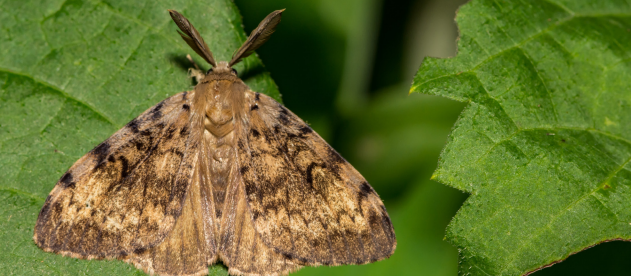Britannia Club delves into the life cycle of FSMC, the implications of its spread, and the critical role of crew members in preventing infestations through rigorous self-inspection and adherence to international biosecurity protocols.
The Lymantria dispar, also known as the flighted spongy moth complex (FSMC), is a species of moths, native to China, far-east Russia and other countries of the Asia-Pacific, such as Japan and Korea.
Spongy refers to the characteristic of the moth eggs which resemble a sponge-like mass. FSMC is a highly destructive pest posing a severe biosecurity risk. If transferred to nonnative locations, the FSMC population is also less likely to encounter limitations imposed by natural barriers, such as predators, parasites, viruses, and competing species.
Life cycle and flight season
The FSMC life cycle progresses through several stages, transforming from eggs to caterpillars, then evolving into pupae encased in cocoons, before reaching the adult stage as the final phase. Caterpillars feeding on leaves cause the destruction that renders FSMC a biosecurity risk.
Female moths lay eggs during the ‘flight season’, typically between May and October depending on the geographical location. To lay their eggs, they can fly as far as 40km, which contributes to the invasive potential of FSMC.
Key points
- FSMC is a destructive pest with the potential to cause severe damage to the environment
- Eggs laid onboard ships can transfer FSMC to new locations
- During flight season, female moths are attracted to lights and may lay eggs in sheltered spots on a ship’s hull, structures, equipment, and cargo
- FSMC eggs will survive almost any weather condition and temperature.
Country specific requirements
According to Britannia, If ships in these countries are discovered to be contaminated with FSMC egg masses, authorities may reject or subject them to quarantine measures. This could then lead to losses, substantial delays, and costly claims.
Consequently, masters, as well as owners and operators trading in the regulated areas, should be aware of the applicable requirements. In the regulating countries, ships must declare whether they have called at ports in areas designated as FSMC (‘regulated areas’) during the current or previous flight season (‘specified risk period’). The majority of regulating countries also require ships to certify that they are free of FSMC on departure from the regulated area.
Furthermore, ships may be subject to an inspection on arrival to verify they are free of FSMC. These inspection regimes may be periodically tightened depending on the season and weather.
In addition to inspections and certification, some regulating countries require ships to complete a self-inspection before arrival. It is recommended that ships have a robust self-inspection routine in place, to address these requirements and to prevent them from arriving at ports with FSMC egg masses.
Ships calling at ports in regulated FSMC areas during the risk period could be subject to procedural requirements in various destination states
- Ships typically need inspection before leaving the regulated area to demonstrate they are free of FSMC
- The ship must follow a notification procedure and provide the required documentation before arriving at a port in a destination state with a FSMC policy
- The ship may require self-inspection while on route
Key points
The regulated areas, specified risk periods, and the associated requirements may differ from country to country. The following summary outlines the requirements in countries with FSMC regulations for incoming ships. These requirements are subject to change and other countries may also introduce regulations. It is important that shipowners monitor the current situation closely and always contact their local representative before arrival.
The role of crew in reducing the risk of FSMC infestation and related claims
Regardless of the regulatory requirement, a robust self-inspection is highly recommended to prevent losses, delays, and claims if FSMC is discovered after arrival. Where deemed necessary, self-inspection may be a part of a comprehensive pest management programme for the ship. Instructions for self-inspection published by CFIA in Canada or MPI in New Zealand provide useful guidance, specifically for FSMC. The crew should be aware of what FSMC looks like, where to look for the egg masses, and how should they be disposed of.
As egg masses are typically located in sheltered spots, self-inspections should be methodical and thorough. Self-inspections should be carried out before departure from the affected port and again on route/before arrival. Some areas should be inspected
with particular attention, for example, areas adjacent to floodlights, which female moths are attracted to. Any egg masses should be scraped off and destroyed by incineration or in boiling water. Self-inspections and disposal of FSMC egg masses should be carefully recorded with a log book entry. It is also advisable to secure photographic evidence.






























































